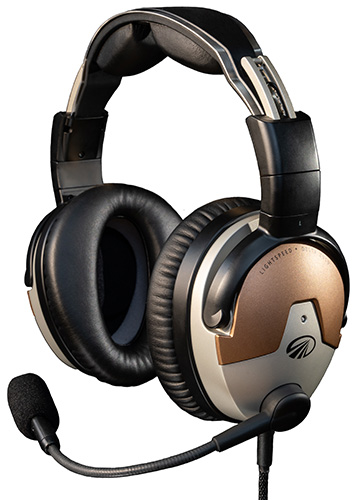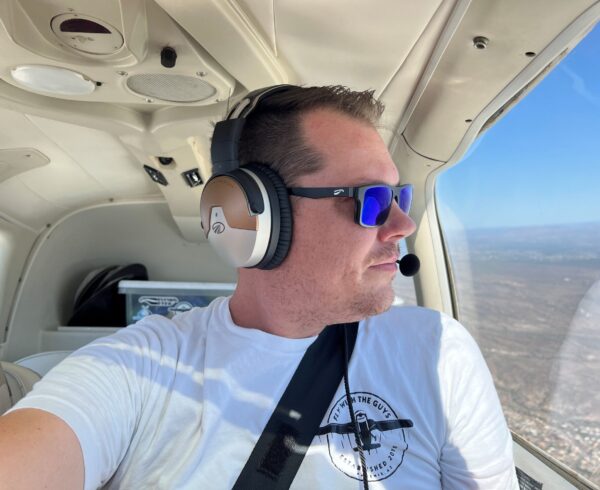A recent online survey from YouGov.com found that out of more than 20,000 US adults surveyed, about a third of the participants, and a whopping 46% of the men, were confident that they could land a commercial airliner in an emergency, with the help of air traffic control. And a CNN commentary article highlighting the survey pointed out how difficult it would be for a non-pilot to land a passenger aircraft, even with all the technology in planes today. Still, aviation technology has come a long way over the last century. Let’s take a quick look at the tech that surrounds a pilot, making flying a better and safer experience, and take a quick look at where it may go from here.
A Century of Safety Innovation
Wilbur and Orville Wright spent 4 years of aeronautic research and development before launching the first engine-powered flight at Kitty Hawk, North Carolina, in 1903. The plane’s innovations included propellers, plus a mechanical control system with forward-mounted stabilizers, a chain-and-sprocket transmission system, and a movable, vertical tail. Built of wood and muslin, the plane had no cockpit; no seat; no gauges, shocks, or wheels; no doors. On its fourth and last flight, it covered about 850 feet in 59 seconds, reaching an altitude of about 10 feet, before being rolled and destroyed by a gust of wind while sitting on the ground. Modern aviation was born, but if planes were to carry people, clearly, safety needed to follow.
By the 1920s, military, commercial, and general aviation were growing, and planes began to be equipped with seatbelts. In the 1930s, instrument panels with gauges helped pilots navigate and see how a plane was performing, and fire extinguishers were added to the safety arsenal. Emergency Locator Transmitters were invented in the 1950s and required by the 1970s to help rescuers pinpoint the location of a downed plane. In the 1980s, Electronic Flight Instrument Systems replaced steam gauges, putting aircraft monitors, flight parameters, autopilot, and flight status in one, compact, easier-to-read display. The 1990s saw the beginning of the “electronic flight bag,” pilots using their personal devices to store and access charts, maps, manuals, and weather information plus digital flight and maintenance logs.
Today, improved flight data monitoring systems allow pilots to detect problems with the flight or plane earlier, and infrared systems give pilots visibility through weather and dark. GPS systems have revolutionized navigation, and Terrain Awareness and Warning System (TAWS) and collision avoidance systems now alert pilots to impending threats. In the 2020s, Automatic Dependent Surveillance-Broadcast (ADS-B) is being deployed to give pilots radically improved situational awareness, with real-time flight information about all surrounding aircraft.
A New Era of Pilot Safety
The pilot is arguably the most important part of an aviation system. (Hence, the reason any old Joe can’t land a plane with the help of an autopilot.) In recognition of that, aviation tech has also evolved to better protect pilots. Hearing and hearing protection has been a big factor in making pilots safer. Accurately hearing comms is critical to flight safely, yet the noise in a cockpit can damage hearing over time. Over the last century of flight, we’ve gone from pilots wearing no hearing protection to passive protection to aviation headsets with sophisticated Active Noise Reduction (ANR) technology that not only protects hearing but improves intelligibility of communications, helping avoid misunderstandings that can cause potential crashes. The Lightspeed Delta Zulu™, launched in 2022, is the first pilot headset that can adapt sound performance to the user’s hearing profile.
Another big risk to pilots and passengers is carbon monoxide exposure. CO monitoring has evolved from none to crude paper test strips to digital monitoring. The Lightspeed Delta Zulu headset puts a built-in CO sensor in the aviation headset and pairs it with an app for customizable alerts and data gathering that can help pilots identify developing issues with an aircraft.
Looking Ahead
Aviation and aviation safety have come a long way in the 100-plus years since Kitty Hawk. And who knows what will come next? Ongoing data analysis has already had a huge impact on aviation safety, and advanced informatics and artificial intelligence are the newest tools in that effort. Experts also predict that AI will take cockpit automation to the next level, aiding pilots with real-time predictions and modeling. Sustainable aviation fuels and even hydrogen-powered aircraft are on the horizon, promising to make flying safer for the environment, too.
So far, technology hasn’t found a way around gravity. What goes up must still come down. But based on the last century of innovation, pilots and passengers can look forward to a future of greater safety and enjoyment while they’re going up, down, and all around.

Lightspeed Delta Zulu®
Lightspeed creates products to protect and save lives and manufactures the best, most premium aviation headsets for pilots. The Lightspeed Delta Zulu® ANR headset is built for pilots who understand the importance of comfort, safety, and control. It includes our best ANR to date, with the superior comfort and durability you expect from a Zulu series headset from Lightspeed, while also introducing groundbreaking smart technology that has saved the lives of pilots and their passengers.
Try for yourself! The Lightspeed Delta Zulu has a 30-day Money Back Guarantee















Leave a Comment